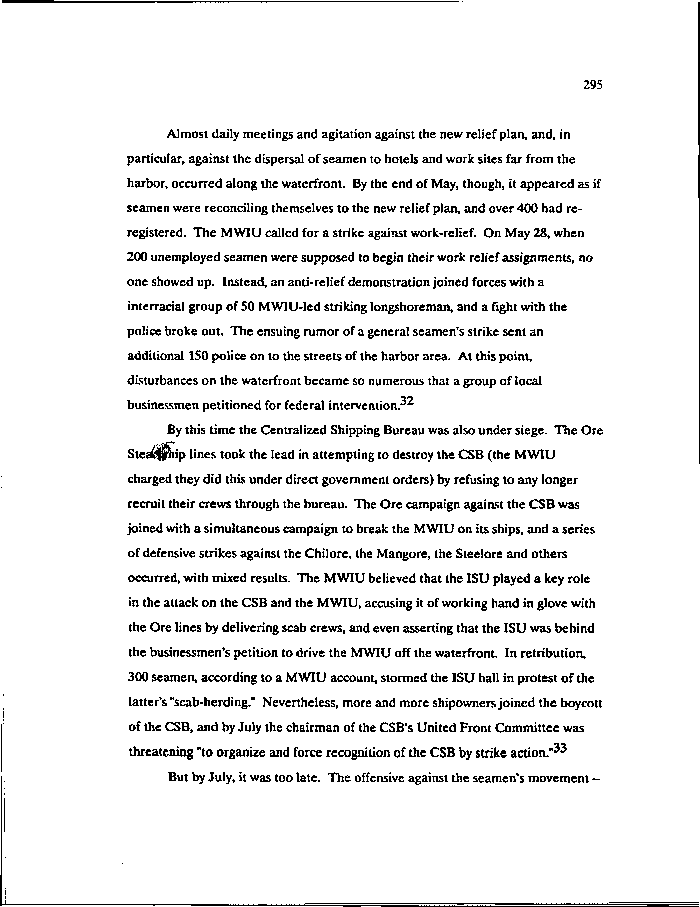|
295
Almost daily meetings and agitation against the new relief plan, and, in
particular, against the dispersal of seamen to hotels and work sites far from the
harbor, occurred along the waterfront. By the end of May, though, it appeared as if
seamen were reconciling themselves to the new relief plan, and over 400 had re-
registered. The MWIU called for a strike against work-relief. On May 28, when
200 unemployed seamen were supposed to begin their work relief assignments, no
one showed up. Instead, an anti-relief demonstration joined forces with a
interracial group of 50 MWIU-led striking longshoreman, and a fight with the
police broke out. The ensuing rumor of a general seamen's strike sent an
additional 150 police on to the streets of the harbor area. At this point,
disturbances on the waterfront became so numerous that a group of local
businessmen petitioned for federal intervention.^
By this time the Centralized Shipping Bureau was also under siege. The Ore
Stea^piip lines took the lead in attempting to destroy the CSB (the MWIU
charged they did this under direct government orders) by refusing to any longer
recruit their crews through the bureau. The Ore campaign against the CSB was
joined with a simultaneous campaign to break the MWIU on its ships, and a series
of defensive strikes against the Chilore, the Mangore, the Steelore and others
occurred, with mixed results. The MWIU believed that the ISU played a key role
in the attack on the CSB and the MWIU, accusing it of working hand in glove with
the Ore lines by delivering scab crews, and even asserting that the ISU was behind
the businessmen's petition to drive the MWIU off the waterfront. In retribution,
300 seamen, according to a MWIU account, stormed the ISU hall in protest of the
latter's "scab-herding." Nevertheless, more and more shipowners joined the boycott
of the CSB, and by July the chairman of the CSB's United Front Committee was
threatening "to organize and force recognition of the CSB by strike action."33
But by July, it was too late. The offensive against the seamen's movement -
|

